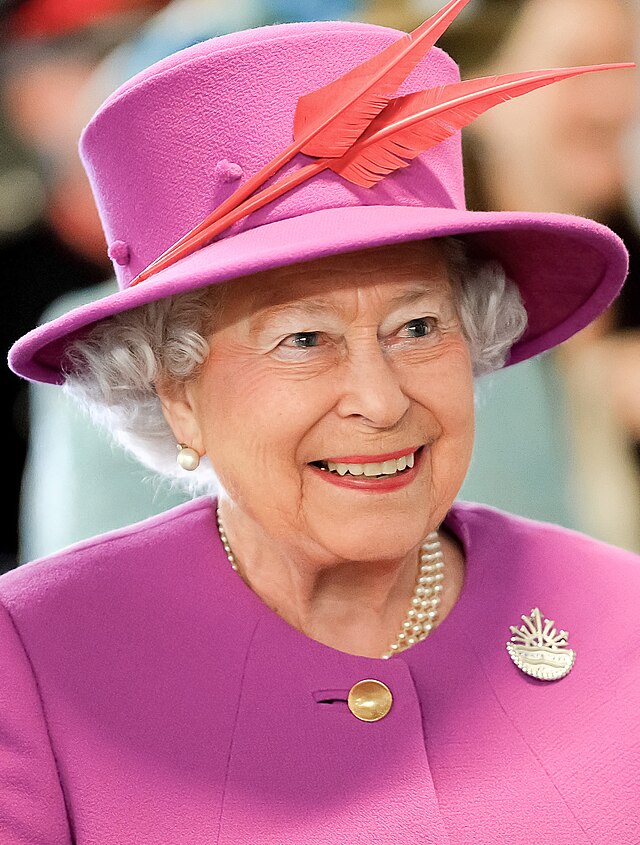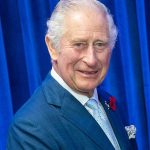Queen Elizabeth II, a figure synonymous with British heritage and stability, left an indelible mark on the world during her historic reign. Revered for her steadfast dedication and poise, she led the United Kingdom through numerous pivotal moments. Beyond her public duties, Queen Elizabeth II’s personal wealth and financial management have long been subjects of public intrigue. This article delves into the various facets of Queen Elizabeth II’s net worth, her early life and family background, personal life, and career achievements, providing a comprehensive overview of one of history’s most iconic monarchs.
Queen Elizabeth Net Worth
Queen Elizabeth II, at the time of her passing in 2022, left behind a substantial net worth estimated at approximately $600 million. This impressive figure was primarily accrued through a combination of inherited wealth, astute investments, and ownership of valuable assets. Despite her position as the reigning monarch of the United Kingdom, her personal fortune remained distinct from the holdings of the Crown Estate, which is independently managed for public and governmental purposes.
One of the most significant components of Queen Elizabeth II’s personal wealth was her ownership of prestigious properties, including Balmoral Castle in Scotland and Sandringham House in Norfolk. These properties were not only symbols of her royal status but also served as her private residences, providing her with a sense of privacy and retreat from the public eye. While fulfilling her official duties as the Queen, these estates offered her a sanctuary where she could enjoy personal leisure and family time.
In addition to her real estate holdings, the Queen’s net worth was greatly enhanced by her extensive collection of art, jewelry, and other valuable items. Over the years, she amassed an impressive array of treasures, many of which held historical significance and cultural value. These assets not only added to her personal wealth but also contributed to the broader cultural heritage of the British monarchy.
Furthermore, Queen Elizabeth II’s financial portfolio was diversified through strategic investments and land ownership. Her investment decisions, guided by trusted advisors, aimed to preserve and grow her wealth over the long term. Additionally, her ownership of land, both within and outside the United Kingdom, provided a stable source of income and asset appreciation.
Queen Elizabeth Early Life and Family
Born on April 21, 1926, in Mayfair, London, Elizabeth Alexandra Mary Windsor was the first child of the Duke and Duchess of York, later known as King George VI and Queen Elizabeth. As a member of the British royal family, Elizabeth was thrust into the limelight from a young age. Her early years were marked by a privileged upbringing, though one not initially aimed at preparing her for the throne.
Elizabeth’s life took a dramatic turn in 1936 when her uncle, King Edward VIII, abdicated the throne, leading her father to become King George VI. This unexpected change elevated Elizabeth to heir presumptive, significantly altering her path and responsibilities. Her upbringing was meticulously shaped to prepare her for future duties, encompassing education in history, law, and languages, alongside a strong emphasis on public service.
Elizabeth’s familial ties extended across Europe, linking her to numerous royal houses through her parents’ and grandparents’ connections. These relationships underscored the interconnected nature of European royalty and provided a rich tapestry of cultural and political influences during her formative years.
Queen Elizabeth Height and Weight
Queen Elizabeth II stood at a height of 5 feet 4 inches (1.63 meters). Throughout her life, she maintained a dignified and composed demeanor, with a presence that commanded respect and admiration. Her physical stature, while modest, belied the immense influence and authority she wielded as the longest-reigning monarch in British history.
Maintaining a healthy lifestyle was part of the Queen’s routine, and she was known for her regular walks, horseback riding, and other physical activities that contributed to her overall well-being. Her public appearances consistently reflected her commitment to duty, regardless of age or physical challenges.
Queen Elizabeth Relationship Status and Personal Life
Queen Elizabeth II married Prince Philip, Duke of Edinburgh, on November 20, 1947. Their marriage, spanning over seven decades, was a cornerstone of her personal and public life. Together, they had four children: Charles, Anne, Andrew, and Edward. Prince Philip’s unwavering support and companionship were instrumental in the Queen’s ability to fulfill her demanding role.
Her personal life, while largely private, occasionally came under public scrutiny, particularly regarding her children’s marriages and the various challenges faced by the royal family. Despite these challenges, Queen Elizabeth II remained a figure of stability and continuity, often seen as a symbol of resilience and perseverance.
Queen Elizabeth’s personal interests included a deep passion for horses and dog breeding, particularly of the Pembroke Welsh Corgi, a breed she helped popularize. These hobbies provided a reprieve from her royal duties and showcased a more personal, relatable side to the monarch.
Queen Elizabeth Career
Queen Elizabeth II’s career, spanning over seven decades, is a testament to her unwavering dedication and adaptability. Her reign witnessed profound changes within the United Kingdom and the Commonwealth, encompassing significant political, social, and technological transformations. From her early ascension to the throne to her lasting legacy, Queen Elizabeth II navigated her role with a blend of tradition and modernity, ensuring the monarchy’s relevance in an ever-evolving world.
Early Career
In the early years of her reign, Queen Elizabeth II undertook extensive tours of the Commonwealth, solidifying Britain’s connections with its former colonies and underscoring the importance of global diplomacy. These tours played a pivotal role in fostering goodwill and showcasing the monarchy’s dedication to the diverse member states of the Commonwealth. Elizabeth’s accession to the throne on February 6, 1952, following the death of her father, King George VI, marked a significant juncture in British history. Her coronation on June 2, 1953, was a momentous event, symbolizing a new chapter for the monarchy as it navigated the post-World War II era and the shifting dynamics of the Cold War.
As a young queen, Elizabeth faced the formidable task of leading a nation in recovery from the ravages of war while adapting to a rapidly changing global landscape. Her early reign was characterized by a commitment to strengthening ties within the Commonwealth and promoting diplomacy on the world stage. Through her travels and engagements, she sought to reinforce Britain’s role as a global leader and champion of peace and cooperation.
During her early career, Queen Elizabeth II also played a significant role in modernizing the monarchy and adapting it to the demands of the modern age. She embraced new technologies, such as television, to communicate with her subjects and engage with the wider public. Her coronation was the first to be televised, allowing people around the world to witness the historic event firsthand.
In addition to her diplomatic efforts, Queen Elizabeth II also took on ceremonial duties and engagements, representing the monarchy at home and abroad. Her dedication to duty and service earned her widespread respect and admiration, laying the foundation for her enduring reign as one of the world’s longest-serving monarchs.
Mid-Career Challenges and Adaptations
The mid-20th century brought numerous challenges, including the decolonization of Africa and the Caribbean, which significantly altered the British Empire’s structure. Queen Elizabeth II adeptly navigated these changes, overseeing the transition of many former colonies to independent nations while maintaining their membership in the Commonwealth.
Domestically, the Queen’s role evolved as she adapted to the changing political landscape, working with a succession of prime ministers from Winston Churchill to Margaret Thatcher and beyond. Her ability to remain impartial and above political fray was a hallmark of her reign, ensuring the monarchy’s stability amidst shifting political tides.
The 1980s and 1990s presented further challenges, including economic fluctuations and public scrutiny of the royal family’s private lives. The Queen’s resilience during these periods, coupled with her commitment to public service, reinforced her position as a symbol of continuity and dedication.
Late Career and Legacy
Queen Elizabeth II’s late career was characterized by a harmonious blend of tradition and modernization, showcasing her adaptability and commitment to her role as the monarch of the United Kingdom and the Commonwealth realms. Embracing the advancements of the digital age, she strategically employed technology to maintain a meaningful connection with the public, notably through televised Christmas broadcasts and later through engaging with social media platforms. These initiatives allowed her to extend her reach beyond geographical boundaries, ensuring her messages resonated with a global audience.
The culmination of her reign, marked by the Golden and Diamond Jubilees commemorating 50 and 60 years on the throne respectively, served as poignant reminders of her enduring popularity and the deep-seated affection the public held for her. These jubilees were not mere ceremonial events; rather, they embodied symbols of national unity and pride, celebrating the steadfastness of the monarchy in an ever-changing world.
Queen Elizabeth II’s legacy transcends the boundaries of her reign, leaving an indelible mark on the institution of the monarchy and the collective consciousness of the British people and the wider Commonwealth. Her unwavering commitment to duty, coupled with her ability to navigate through societal shifts with grace and dignity, solidified her status as an emblem of stability and continuity.
Throughout her seven-decade reign, she steered the monarchy through periods of significant change, transforming it from a symbol of imperial power into a beacon of cultural continuity and national identity. Her legacy is one of resilience, adaptability, and unwavering dedication to public service, serving as an inspiration for future generations.












